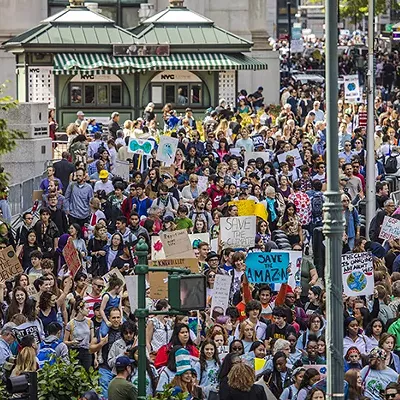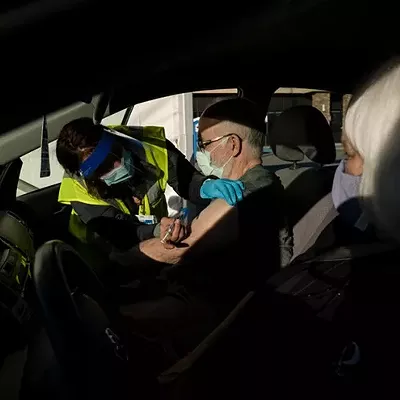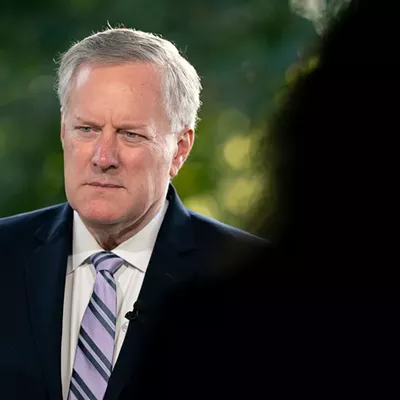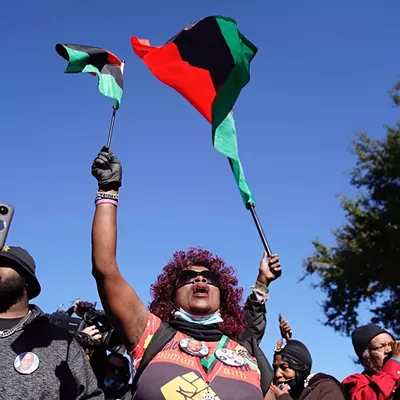
By Somini Sengupta and Anne Barnard
The New York Times Company
Anxious about their future on a hotter planet, angry at world leaders for failing to arrest the crisis, hundreds of thousands of young people poured into the streets Friday for a day of global climate protest.
In New York, the main demonstration got underway around midday; it was clear that turnout would be large. Many brought handmade signs. “Think or Swim,” one read.Strikes were planned in each of the 50 United States. By late morning, protesters across the Eastern Seaboard were streaming out of schools and office buildings, pooling around steps of local city halls. Police in Baltimore blocked roads as students arrived on foot, scooter and skateboard. In St. Petersburg, Florida, about 200 protesters convened at City Hall, including one dressed as a polar bear with a sign that said “Climate Action Now.”
In Des Moines, Iowa, around 500 protesters with signs gathered outside the state capitol building, sweat rolling down their faces as temperatures hovered around 83 degrees Fahrenheit, or about 28 Celsius. A day after Tropical Storm Imelda swamped parts of southeast Texas, crowds in Houston chanted, “Our streets flood, so we flood the streets.”
Many websites went dark in solidarity with the protests or posted statements of support. Groups of scientists, doctors and technology sector workers were also joining the strikes in various locations.
More than 1,500 employees of Amazon planned to walk out from the company’s Seattle headquarters and other office locations, after months of pressing the technology company to issue a comprehensive climate plan. Workers at Google, Facebook and Twitter also said they planned to participate.
Demonstrations in North and South America will be the culmination of a day of global strikes that began almost 24 hours earlier as morning broke in the Asia-Pacific region.
More than 100,000 protested in Melbourne, in what organizers said was the largest climate action in Australia’s history. The rally shut down key public transport corridors for hours. In Sydney, thousands gathered in the Domain, a sprawling public park.
Banners in Kenya’s capital, Nairobi, ranged from serious to humorous. One read, “Climate Emergency Now.” Another said, “This planet is getting hotter than my imaginary boyfriend.” In Mumbai, children in oversize raincoats marched in the rain. Thousands turned out in Warsaw, the capital of coal-reliant Poland.
Roughly 100,000 demonstrators showed around the Brandenburg Gate in Berlin on a bright but unseasonably chilly day, according to police.
“We all know what the problem is,” said Antonia Brüning, 14, marching nearby, next to the Reichstag, with friends from school. “So why isn’t anything happening?”




















